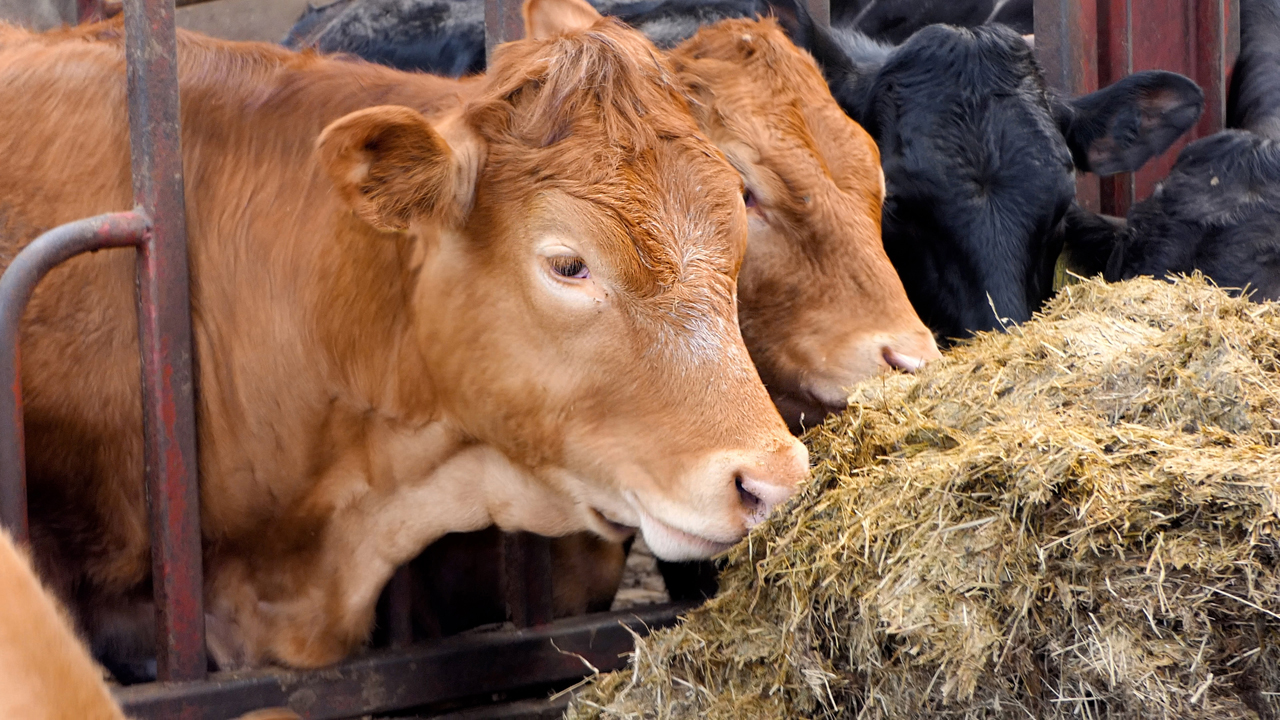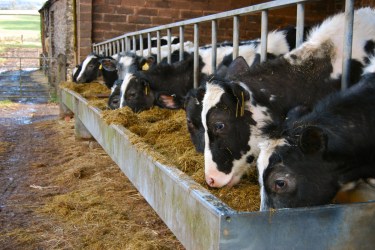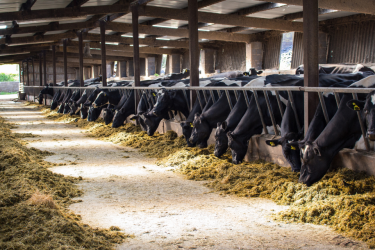Silage-cutting time is a critical period, which requires meticulous management to ensure high-quality winter forage. While earlier, more frequent cuts can enhance quality, weather conditions remain a key influence. As our Sustainability Consultant Ellie Newman explains, detailed analysis will help you to control your inputs and outputs, so don’t skimp on this option.
Why silage analysis is crucial
Put simply, silage analysis enables you to understand the nutritional value, fermentation quality and chemical composition of your silage.
It is vital for formulating the correct diet for your herd. Firstly, it allows you to understand what concentrate you will need to use and ensures that you formulate the correct ration to promote fertility, growth, and the overall health of your animals. It also helps you to prevent the overfeeding of protein, which will have financial benefits for you, as well as environmental benefits for your farm.
Of course, the ration formulation that you choose will depend on your aims for the herd. However, whatever you choose, it is vital that you work scientifically, to get the best out of any diet, both for cows’ rumen bugs and for your bottom line.
Silage analysis = data overload?
Silage analysis information can be pretty overwhelming. There are a lot of figures – and while each of them is crucial, it’s vital to know their significance before you can use them to fine-tune your animals’ feed.
By getting to grips with this information, you’ll be really well placed to optimise your feed production, whatever your aims, and regardless of conditions. To help you, I’ve put together two guides, below. The first is a quick run through of the key measurements – the other gives more detail.
Silage analysis – key measurements in brief
Here’s a quick rundown of the important elements of a silage analysis.
- CP (crude protein) – This is the nitrogen (N) content, on the assumption that the N content of protein is 160g/kg DM (dry matter). Expressed as a percentage.
- D (digestibility) value – This is the essential indication of the quality of the feed and is the measure of the proportion of the forage that your livestock can digest. Expressed as a percentage.
- ME (metabolisable energy) – The energy available for use by the animal, after subtracting losses in faeces, urine and methane. Expressed as MJ/kg DM.
- NDF (neutral detergent fibre) – This represents the total weight of the cell walls present in your forage, as a percentage of its total weight. The cell walls are made up of cellulose, hemi-cellulose, and lignin. It is expressed as a percentage of the DM (dry matter).
- ADF (acid detergent fibre) – This is the portion of fibre that is composed of cellulose and lignin and pectin. It shows the undigestible material in the silage. Expressed as a percentage.
- DM (dry matter) – The material left after all the water has been removed. Often expressed as a percentage. The lower the percentage the better.
- pH – This shows the acidity, giving an indication of the type of fermentation that has taken place. Under anaerobic conditions, the water-soluble carbohydrates ferment to organic acids, mainly lactic, which lowers the pH value.
- PAL (potential acid loading) – This is a measure of the acid content of the silage and can be used in conjunction with NDF to estimate the acid that will be produced by the microbes during fermentation of silage in the rumen. Expressed as Meq/kg.
- Ash – The inorganic portion, containing the essential seven major elements such as calcium and magnesium, and eight trace elements, including iron, copper and zinc, within a sample. Expressed as a percentage.
- Ammonium Nitrate (NH3-N) – The proportion of nitrates, shown as a percentage of total nitrates, that have converted to ammonia. This figure indicates that proteins have been broken down by plant enzymes. The lower the percentage the better.
- Ether extract – The total lipid (fats, oils and waxes) present. Expressed as g/kg DM.
- NFE (nitrogen free extract) – The carbohydrate component, containing all the sugars, starch and water-soluble vitamins. Expressed as g/kg DM.
- Gross Energy – The maximum amount of energy to be obtained from a feed. Expressed as MJ/kg DM.
- VFAs (Volatile fatty acids) – These consist of acetic, propionic and butyric acids excluding lactic acid. These are less desirable for the fermentation and stability of the silage. Lower values indicate a stable silage. Expressed as g/kg DM.
Silage analysis – key measurements in detail
This section gives some more information about the key measurements of silage analysis.
CP (Crude protein)
Of all these measures, the CP (crude protein) figure is particularly important. Its value will influence the rest of the ration and how much protein is required in the blend.
Crude protein is a measure of the nitrogen only, which is available to the rumen bugs. There is often potential to get silage CP up to around 16%. However, as the growing season goes on, the CP declines. Therefore, you should expect this figure to be higher in the first cut. That is why you should aim to start cutting grass for silage as early in the year as possible, if the weather allows.
D-value
D-value is a measure of the digestibility of your silage. The higher the value towards 70% the less concentrate you will need to add, to balance the ration.
Studies have shown that if you raise the digestibility of your silage you will increase its intake. In turn, this will increase milk production. Also, there are many studies that show the positive correlation between the D value and the silage dry matter intake, which enables you to formulate the rest of the ration.
ME (metabolisable energy)
ME in silage refers to the energy value available to the animal. It can be predicted from the ‘D-value. ME is expressed in megajoules (MJ) per kilogram of dry matter (DM). For example, young leafy grass silage may have an ME greater than 11.2 MJ/kg DM
| Good | Moderate | Low | |
|---|---|---|---|
| D-value (%) | 70 | 65 | 60 |
| % of ear emergence | 25 | 50 | 100 |
| ME (MJ/kg DM) | 11.5 | 10.5 | 9.5 |
| CP (%) | 16 | 12 | 10 |
| Feed to | Finishing stock, ewes carrying multiples | Growing cattle, autumn-calving suckler cows, ewes carrying singles | Dry stock, spring- calving suckler cows |
Neutral detergent fibre and acid detergent fibre
Neutral detergent fibre and acid detergent fibre are a measure of fibre. NDF is the part which contains cellulose, hemi-cellulose and lignin. Spring grass tends to have lower levels of NDF, but this content increases throughout the year. Also, as the fibre goes up the D value and ME both drop. The NDF represents the total weight of the cell walls. This determines the volume of the feed and therefore the capacity to fill the rumen.
DM (Dry matter)
The dry matter indicates how much silage your cows will be able to eat. 32% is a good average figure – indicating that your silage is not too wet, so your cows can eat plenty of it. If the figure is above 35% this will indicate that you have problems with your fermentation process.
The dry matter indicates the storage conditions, as well as the stability of the feed. The amount of wilting time will be a factor in this result. If you pick up your crop the same day as it is cut it may be slightly wetter than if you leave it to wilt for a day. Of course, it depends on your prevailing weather conditions at the time of cutting and gathering. If your silage has a DM slightly higher than expected, it may mean there will be more effluent from the pit. So, ensure your pit is up to regulation and that you collect the effluent, or run it into your slurry store.
pH
As many of us remember from our school chemistry lessons, pH is the measure of acidity. In silage it shows the level of fermentation which has taken place. Lower levels of around 4.0 indicate a stable fermentation has taken place. However, if it drops too much below 4.0 it can become unpalatable for the cows.
Once the grass is cut lacto persilis starts to grow and produce, then it thrives when fermentation starts. It takes up the sugars as an energy substrate, then excretes lactic acid back into the silage clamp. This lowers the pH, which can then become so acidic the lacto persilis slows its own activity, creating a self-inhibiting process.
PAL (potential acid loading)
PAL is an important area to monitor as it can contribute to giving the cow acidosis. Generally, it is very low in all silages – in contrast to the high levels found in finely ground cereals. However, if you have issues with acidosis in your herd, this would be an area to investigate.
Ash
Ash is a measure of the minerals. However, it does not indicate exactly which exact minerals are present. If there are high levels present it could indicate soil contamination, which can happen when you cut too low to the ground. The average figure is around 8%, and it indicates that there is no soil contamination. It is important to remember to clean tractor tyres before rolling to stop soil contamination.
Ammonium Nitrate
This is a measure of protein breakdown and indicates the presence of butyric acid and acetic acid. These are undesirable fermentation acids, so the lower the figure the better.
Clostridia bacteria will take up the lactic acid and secrete butyric acid, which will mean there has been a second fermentation. As this happens it can break up proteins and produce amines and ammonia. Ammonia is not a big problem, but amines can make the silage unpalatable and potentially toxic.
Even though high levels of acetic acid can show a poor fermentation, it is also desirable to have small amounts of this acid as it reduces the growth of yeast and moulds. Always make sure that you consolidate your silage correctly, with regular rolling of thin layers and cross rolling if possible.
Also, ensure that you seal the clamp each day, to prevent air entering the grass. This will reduce the likelihood of an undesirable fermentation taking place.
Ether extract
The ether extract relates to the lipids in the forage. This can have an impact on the energy levels available in the silage.
Three major influencers of lipid content are:
– forage species,
– plant maturity (governed by the time of year you cut your grass – lipids are mostly stored in the leaves, not the stem)
– fertiliser regime.
Volatile Fatty Acids
Volatile fatty acids (VFAs) indicate that oxygen was present in the pit and will give rise to high ammonia levels. High levels of both VFAs and ammonia indicate that the oxygen has led to grass protein breakdown, which reduces the amount of silage your cows will want to eat.
Essentially, you will have allowed your silage to convert to compost – a waste of both your time and your money! If this does happen, you’ll have to re-assess your ensiling technique, and make sure that you create a properly sealed, oxygen-free pit.
How Promar can help
If you are struggling to understand your silage analysis please reach out, we have a team of specialised farm consultants who can come out and discuss this with you further. They can also come and take silage samples for you and send them off to the lab.
We also offer this service as part of the DEFRA Farm Resilience Fund. These are fully funded visits where our farm consultants will meet with you and will conduct detailed analyses to help you identify the best ways to ensure your farm thrives in a world without BPS.
We will support you all along the journey, with up to four farm visits, follow-ups, and re-appraisals, to ensure that your business stays on track for the outcomes you seek. Our insights will identify areas of underperformance and will enable practical improvements that increase your business efficiency.
If you would like any support with sampling or analysing your silage, or accessing grant funding to help with costs, please contact us on 01270 616800







